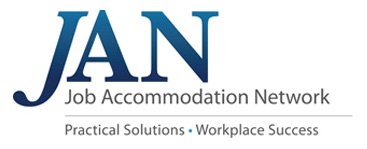The tangled web of Conduct, Performance Management and Disability
What happens when you are about to take disciplinary action for your employee with performance or conduct violations, and at the onset of that discussion, the employee tells you that they feel the performance or conduct deficiency is due to their disability? This is not an uncommon occurrence for employers. Does the performance track get wiped clean as you being the interactive process? Who determines (and how) if the performance issues are actually related to the disability? What if accommodations are not effective at resolving the issues?
Starting with the fundamentals, we know that employers are required to consider reasonable accommodations that may be necessary to support the employee in performing the essential functions of the job. What is inherent in that, but not often stated, is that the accommodations, to really be “reasonable”, must be effective at supporting successful performance of the job. That includes appropriate performance and conduct.
Lowering established performance or productivity standards is not something that is required under California or Federal disability law. According to the EEOC (see the link here to “Applying Performance and Conduct Standards to Employees with Disabilities”, the Americans with Disabilities Act (ADA)
“does not impinge on the right of employers to define jobs and to evaluate their employees according to consistently applied standards governing performance and conduct. Under both laws, employees with disabilities must meet qualification standards that are job-related and consistent with business necessity and must be able to perform the “essential functions” of the position, with or without reasonable accommodation.”
 Does the performance track move full steam ahead in these situations? The answer is “not exactly”. The advice I give to employers is that upon learning that the effects of a disability may be affecting the employee’s performance, you will need to hit the “pause” button on the performance issues while you then engage in the interactive process. You have a right to request from the employee that they provide you with information from their care provider on what their limitations are, or what the effect of the disability is on the performance of the job functions. The Job Accommodation Network’s (JAN) “Medical Inquiry Form” is a great tool to assist at this junction.
Does the performance track move full steam ahead in these situations? The answer is “not exactly”. The advice I give to employers is that upon learning that the effects of a disability may be affecting the employee’s performance, you will need to hit the “pause” button on the performance issues while you then engage in the interactive process. You have a right to request from the employee that they provide you with information from their care provider on what their limitations are, or what the effect of the disability is on the performance of the job functions. The Job Accommodation Network’s (JAN) “Medical Inquiry Form” is a great tool to assist at this junction.
The interactive process will also include a discussion with you and the employee about accommodations that might be effective at supporting successful performance of the job. It is important to explain to the employee that lowering established performance standards is not a feasible end result, and that instead, the focus of the process should be on what accommodations would be helpful in eliminating or minimizing the effects the disability is having on the performance. For example, if an employee with a cognitive impairment is having difficulty with focus and concentration, and that is impacting the accuracy of their work, what would help the employee to focus more effectively? Keeping in mind that all reasonable accommodation decisions are fact specific and made on a case-by-case basis, things like noise cancelling headphones, white noise recordings or a more private space could be some options to consider. Remember to use the available resources to help you in the process as needed, which should always include JAN. You can submit questions on line to JAN when in need of ideas or assistance (the JAN “on demand” feature or you can search through the A to Z of Disabilities section of their web site to review literature including accommodation ideas that have been helpful in accommodating specific disabilities.
 If the interactive process results in identifying accommodations that you believe will alleviate the performance issues, once you have put those in place, you will need to give a reasonable amount of time to see the positive effects take place before you “un-pause” and resume the performance track. I cannot give you a set time frame as one absolute standard. The amount of time is really dependent on the specific accommodation and the performance issues. The key to success is demonstrating your willingness as an employer to give the accommodation time achieve the desired end result.
If the interactive process results in identifying accommodations that you believe will alleviate the performance issues, once you have put those in place, you will need to give a reasonable amount of time to see the positive effects take place before you “un-pause” and resume the performance track. I cannot give you a set time frame as one absolute standard. The amount of time is really dependent on the specific accommodation and the performance issues. The key to success is demonstrating your willingness as an employer to give the accommodation time achieve the desired end result.
If after a reasonable amount of time the performance deficiencies continue, resume the interactive process to see if there are any other ideas for accommodations. You are only finished with the interactive process when you have successful accommodations in place, or you have exhausted all possible ideas and options for reasonable (in other works, effective) accommodations. I encourage all employers to remember that accommodations are NOT intended to burden your organization with employees who simply cannot get the job done. They are intended to create the “win-win” result of you retaining a valued and productive employee, and the employee being able to succeed at work despite the disability.

